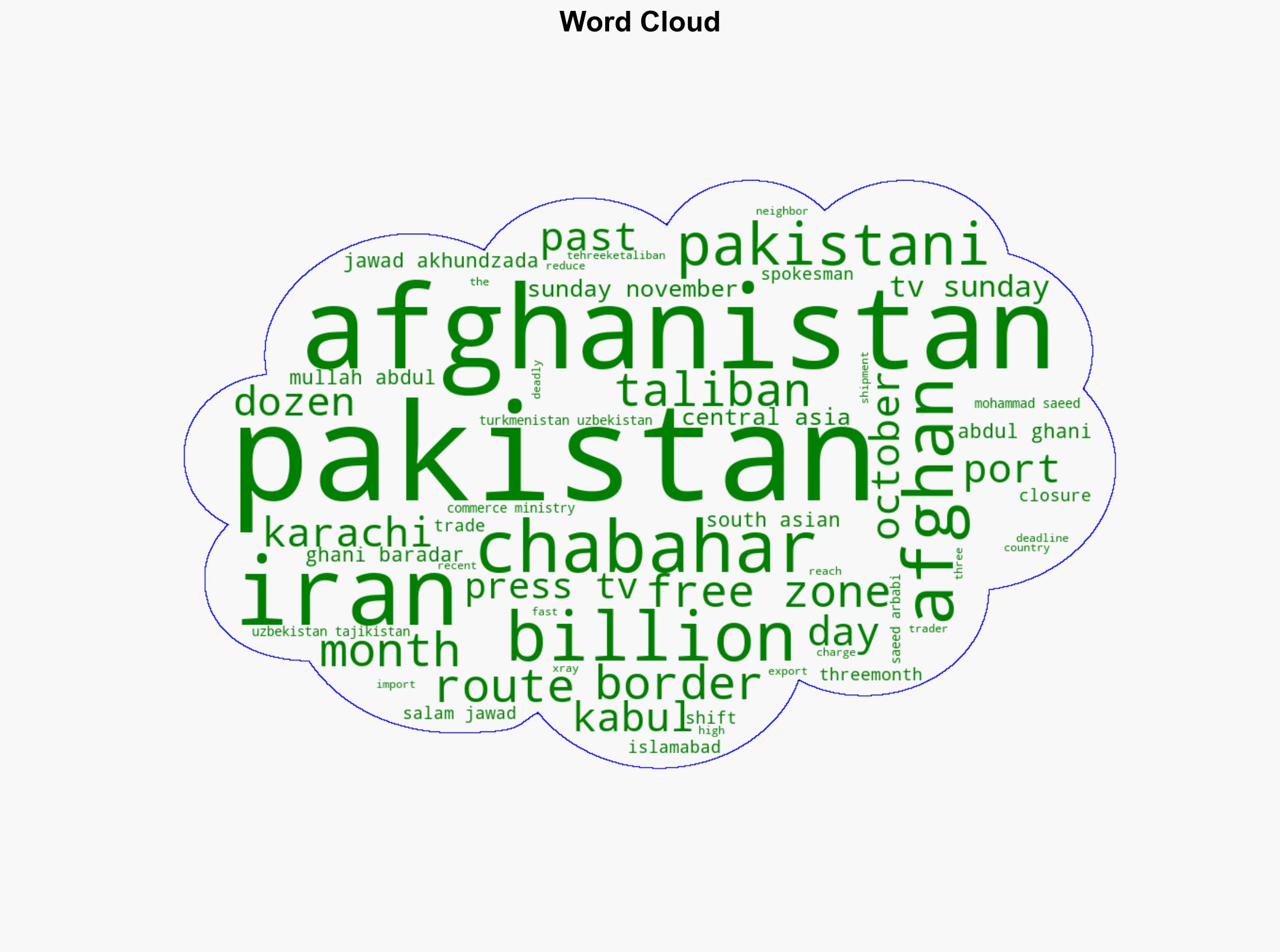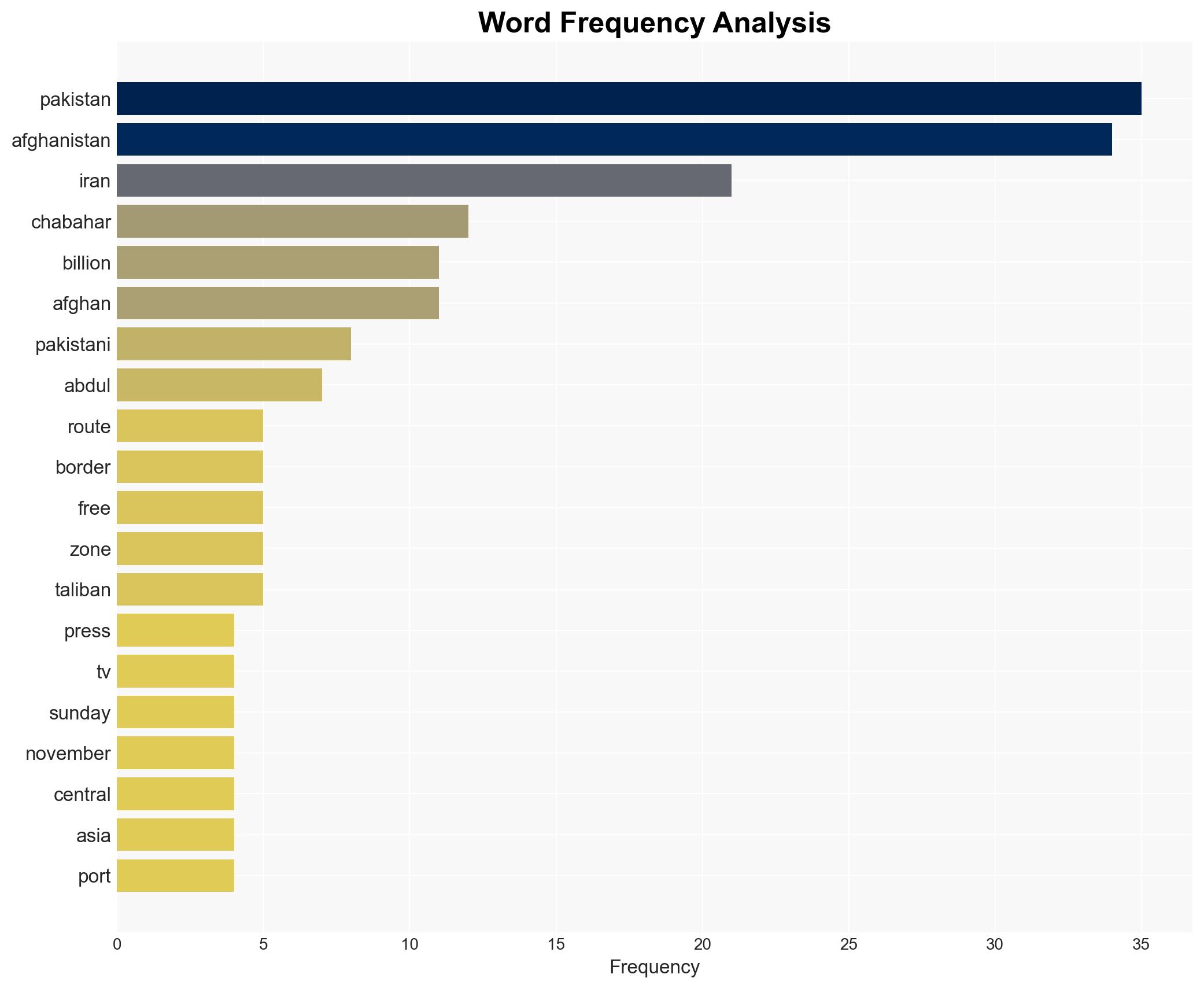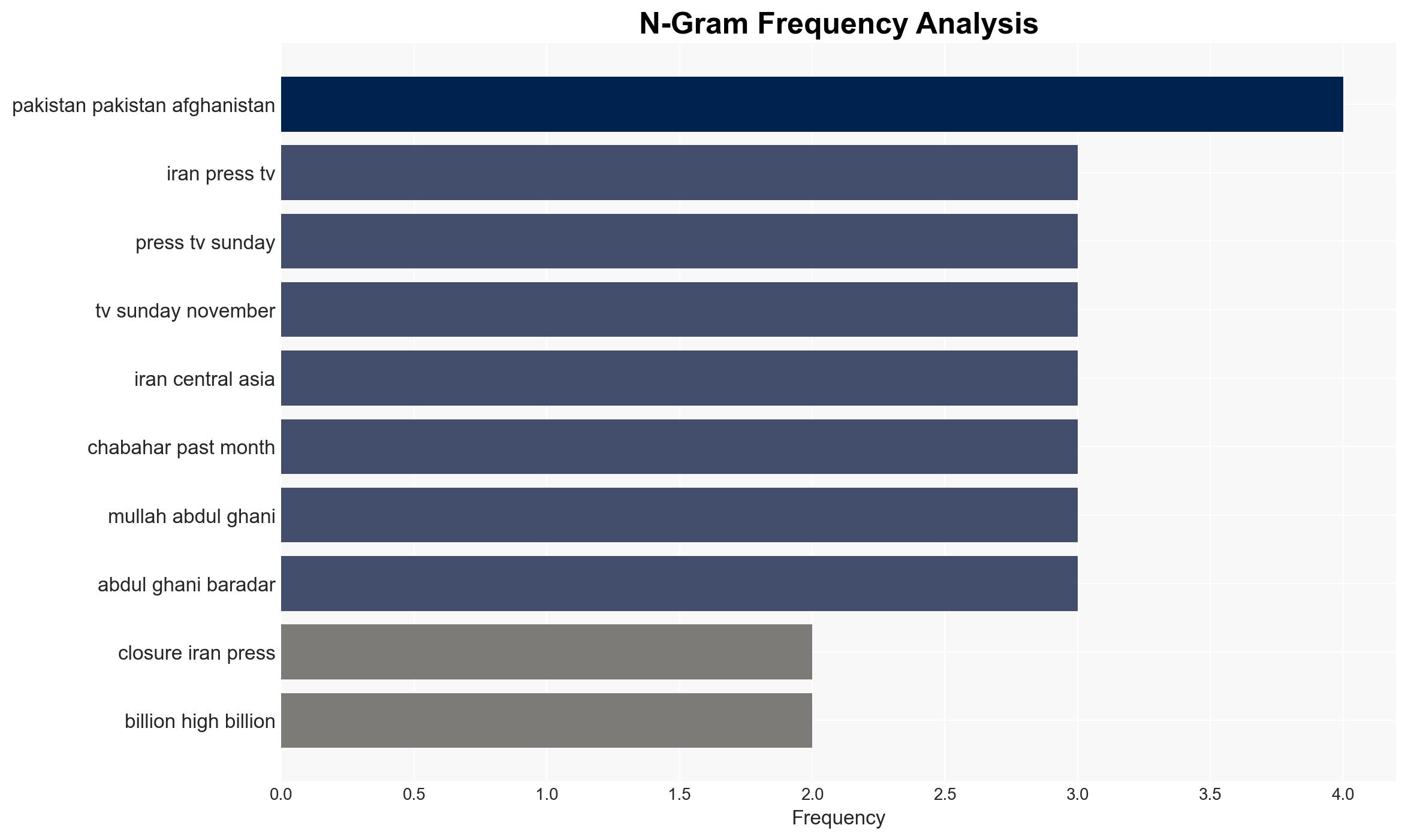Afghanistan turns to Iran route amid Pakistan border closures – Globalsecurity.org
Published on: 2025-11-17
AI-powered OSINT brief from verified open sources. Automated NLP signal extraction with human verification. See our Methodology and Why WorldWideWatchers.
Intelligence Report: Strategic Analysis of Afghanistan’s Shift to Iran Trade Routes
1. BLUF (Bottom Line Up Front)
With a high confidence level, the most supported hypothesis is that Afghanistan’s shift to Iranian trade routes is a strategic maneuver to reduce dependency on Pakistan due to recurring border tensions. This shift could lead to significant geopolitical and economic realignments in the region. Recommended actions include monitoring the evolving trade dynamics and assessing potential impacts on regional stability.
2. Competing Hypotheses
Hypothesis 1: Afghanistan is strategically diversifying its trade routes to reduce dependency on Pakistan due to persistent border closures and political tensions. This hypothesis is supported by the increased trade volume with Iran and infrastructure developments at the Chabahar port.
Hypothesis 2: The shift towards Iranian trade routes is primarily a temporary response to immediate logistical challenges posed by Pakistan’s border closures, with Afghanistan likely to revert to Pakistani routes once tensions ease, given their historical trade ties and logistical efficiency.
Hypothesis 1 is more likely due to the substantial investments in Iranian infrastructure and the Afghan government’s explicit directives to traders, indicating a long-term strategic shift rather than a temporary adjustment.
3. Key Assumptions and Red Flags
Assumptions: It is assumed that the Afghan government has the capacity to sustain increased trade through Iran and that Iran will continue to support this trade shift without significant geopolitical constraints.
Red Flags: Potential deception indicators include overstated trade figures or exaggerated claims of reduced dependency on Pakistan. Additionally, the Taliban’s historical ties with Pakistan could complicate this shift.
4. Implications and Strategic Risks
The shift in trade routes could lead to increased Iranian influence in Afghanistan, potentially altering regional power dynamics. There is a risk of escalating tensions between Afghanistan and Pakistan, which could manifest in political or military confrontations. Economically, Afghanistan’s reliance on Iran might expose it to sanctions or geopolitical pressures affecting Iran.
5. Recommendations and Outlook
- Monitor trade data and infrastructure developments at Chabahar to assess the sustainability of this shift.
- Engage in diplomatic dialogues to mitigate potential escalation between Afghanistan and Pakistan.
- Best-case scenario: Afghanistan successfully diversifies its trade routes, enhancing economic resilience.
- Worst-case scenario: Heightened tensions lead to regional instability and economic disruption.
- Most-likely scenario: Afghanistan continues to balance trade between Iran and Pakistan, leveraging both routes for strategic advantage.
6. Key Individuals and Entities
Abdul Salam Jawad Akhundzada (Commerce Ministry Spokesman), Mullah Abdul Ghani Baradar (Deputy Prime Minister for Economic Affairs), Mohammad Saeed Arbabi (CEO of Chabahar Free Zone).
7. Thematic Tags
Counter-Terrorism, Regional Trade Dynamics, Geopolitical Strategy, Economic Diversification
Structured Analytic Techniques Applied
- ACH 2.0: Reconstruct likely threat actor intentions via hypothesis testing and structured refutation.
- Indicators Development: Track radicalization signals and propaganda patterns to anticipate operational planning.
- Narrative Pattern Analysis: Analyze spread/adaptation of ideological narratives for recruitment/incitement signals.
Explore more:
Counter-Terrorism Briefs ·
Daily Summary ·
Support us
·





